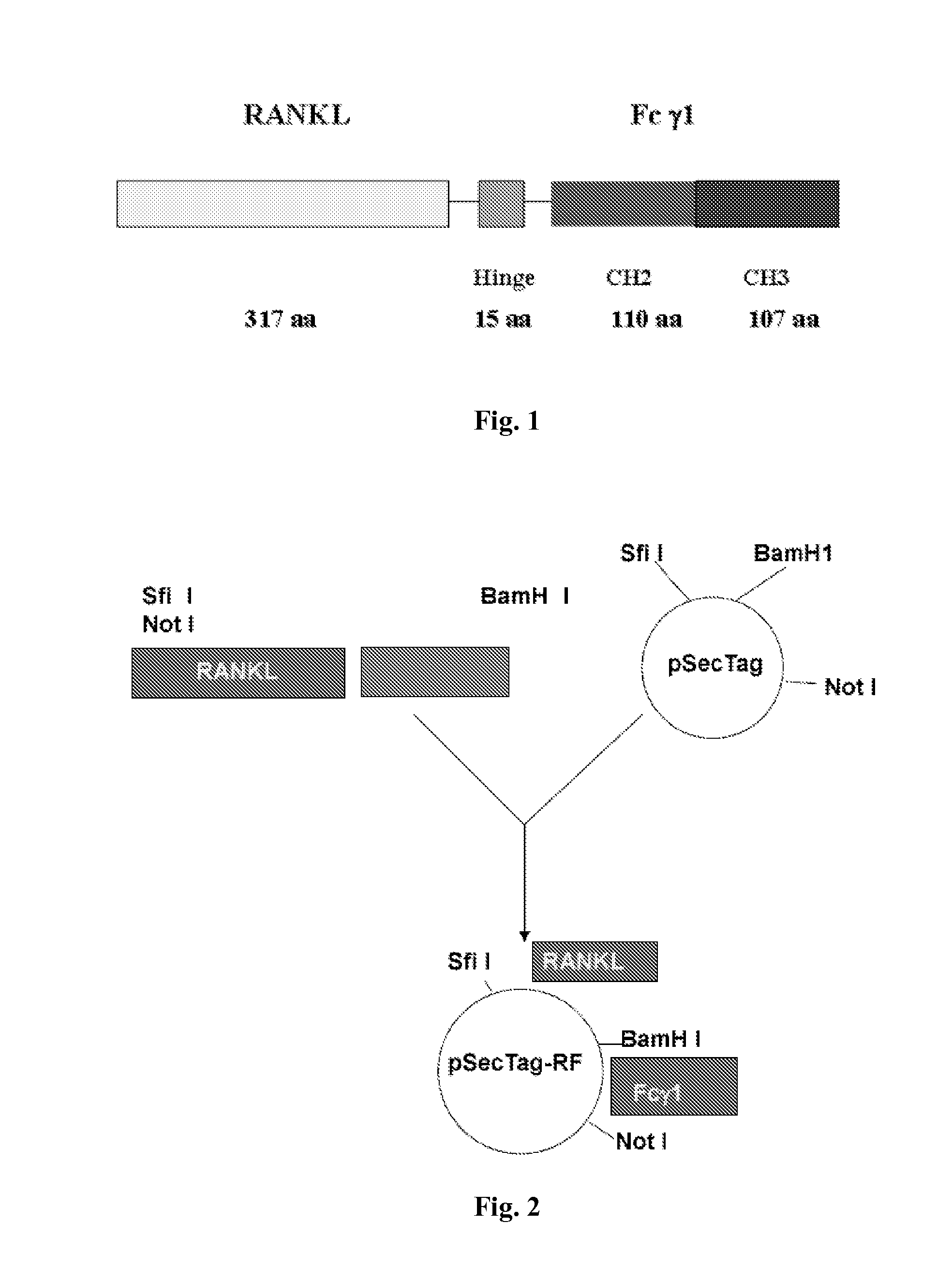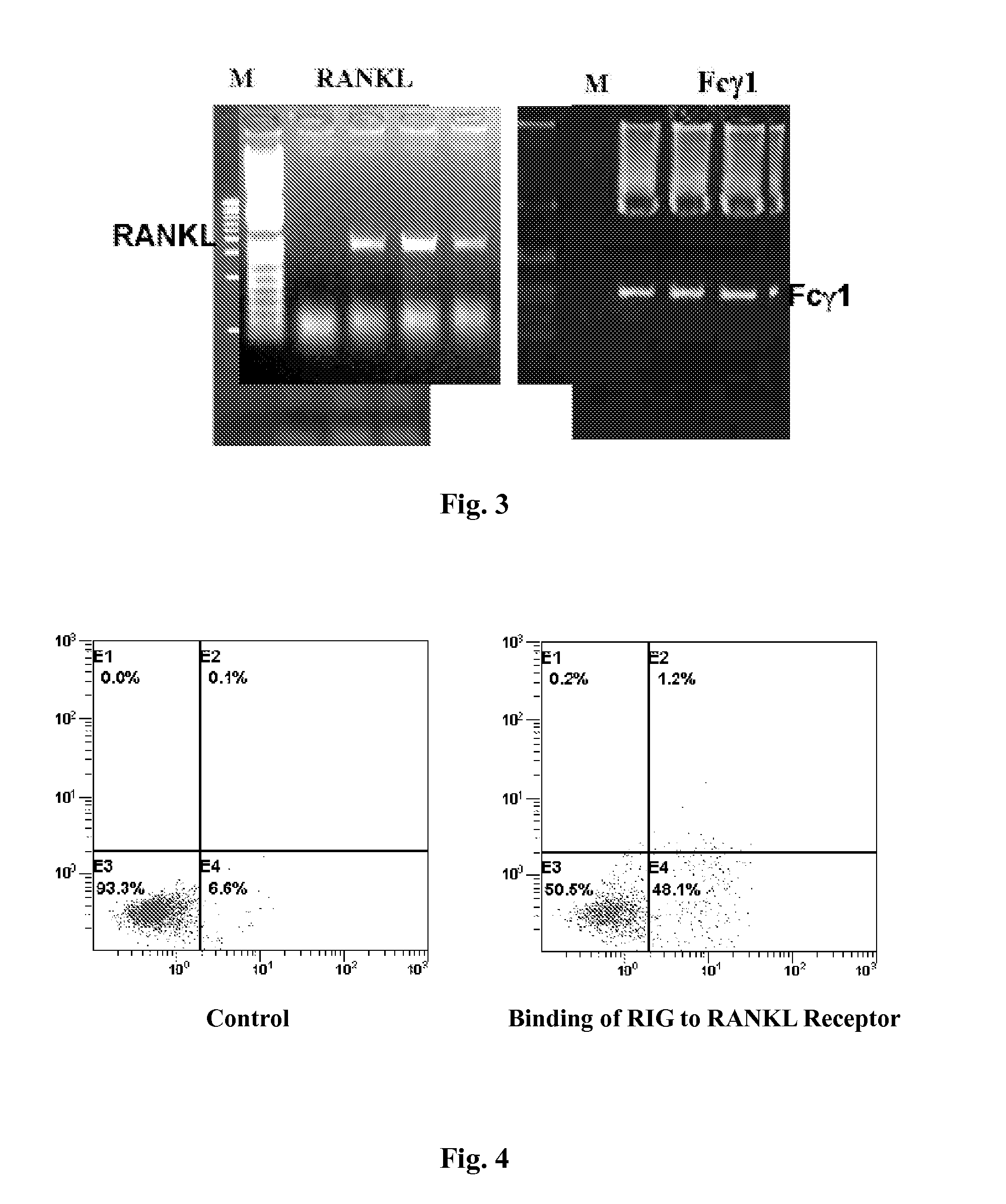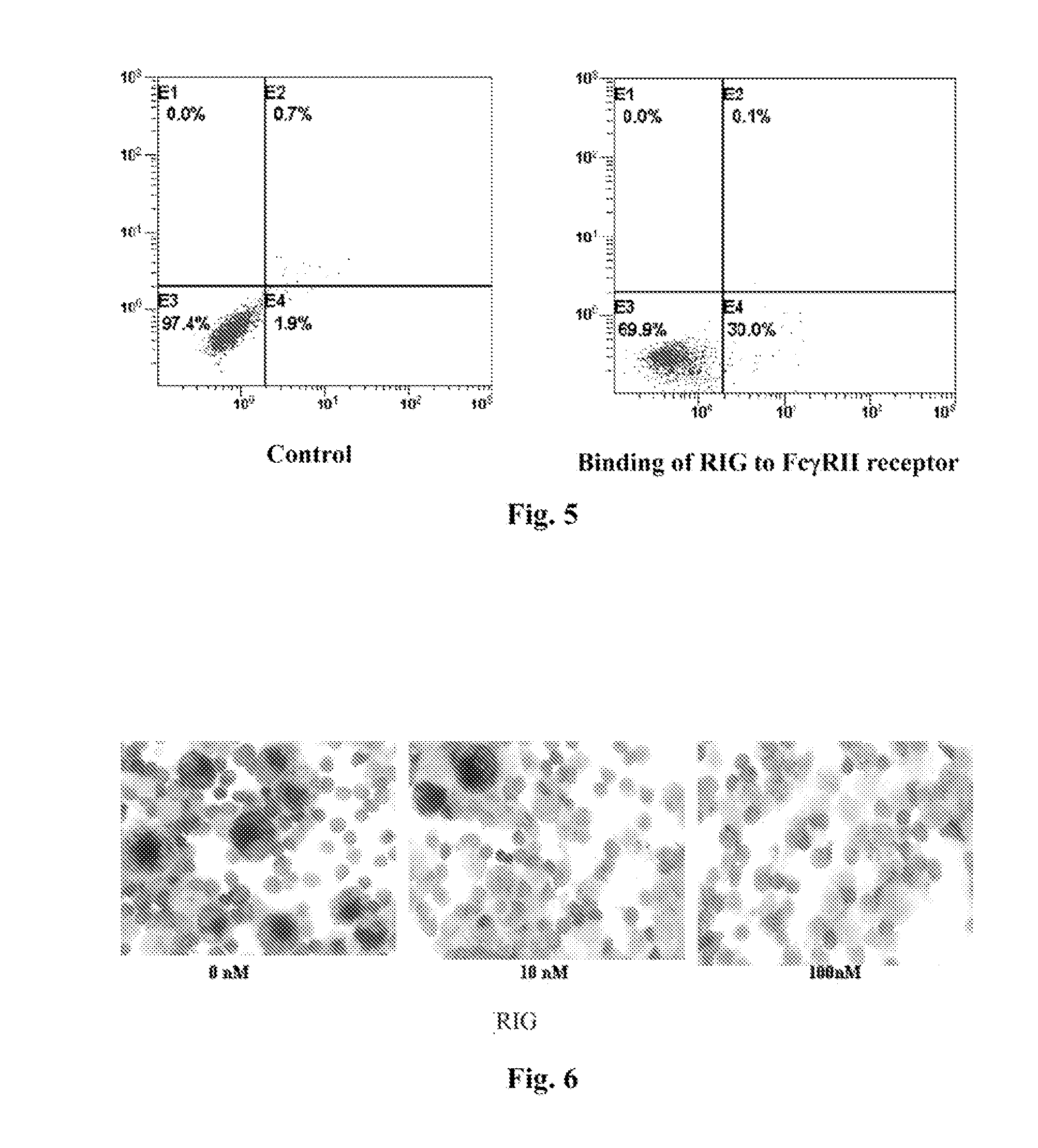Fusion Protein Inhibiting Osteoclast Formation, Preparation Method and Medicine Compositions Thereof
a technology of fusion protein and osteoclast, which is applied in the field of biotechnique for preparation of fusion protein, fusion protein and pharmaceutical composition, can solve the problems of osteoporosis that often leads to bone fracture, and the risk of endometrial carcinoma in patients is considerable, so as to inhibit osteoclast formation
- Summary
- Abstract
- Description
- Claims
- Application Information
AI Technical Summary
Benefits of technology
Problems solved by technology
Method used
Image
Examples
example 1
Expression of Fusion Protein RIG
[0032]As illustrated in FIG. 2, the expression of the fusion protein includes the following steps: T lymphocytes and B lymphocytes were drawn from circumference blood and purified, from which mRNA were extracted. The specific primers were used to amplify the RANKL and Fcγ genes from T lymphocytes and B lymphocytes respectively using RT-PCR method. The primers used are from:
5′-GGCCCCGAGGGCCATGCGCCGCGCCAGCAGAGASEQ ID NO: 3C-3′; 5′-GGATCCGATCTATATCTCGAACTTTAAAAGC-3′;SEQ ID NO: 45′-GGATCCGAGCCCAAATCTTGTGAC-3′;SEQ ID NO: 55′-GCGGCCGCTCATTTACCCGGAGACAGGGAGASEQ ID NO: 6G-3′.
[0033]The amplified RANKL and Fcγ genes were analyzed on 1% agarose electrophoresis. As shown in FIG. 3, the RANKL amplification product is about 970 bp long, while the Fcγ DNA amplification product is about 714 bp long. The two PCR products were cloned separately into CR4-TOPO vector (Invitrogen, CA) to obtain pRANKL and pFcγ plasmids respectively. The recombinant plasmids were sequence...
example 2
Binding Experiment of RIG and RANK (RANKL Receptor)
[0035]1*106 THP1 monocytes were grown in MCSF and RANKL medium for 72 hours and mixed with 5 μg purified RIG protein from Implementation 1 for additional 1 hour at 4° C. 5 μl FITC labeled anti human RANKL antibody (CALTAG, CA) was then added into the mixture and flow cytometry was used to examine FITC positive cells. As shown in FIG. 4, the result indicates that RIG protein bind to RANK which made the THP1 cell FITC positive. In FIG. 4, SSC-H presents the pellet number in cytoplasm, FSC-H presents the cell size, FL2-H presents PE and FL1-H presents FITC.
example 3
Binding Experiment of RIG and FcγRII Receptor
[0036]1*106 HMC-1 cells were mixed with 5 μg purified RIG protein from Implementation 1 for 1 hour at 4° C. 5 μl FITC labeled anti human IgG antibody (CALTAG, CA) was then added into the mixture and flow cytometry was used to examine FITC positive cells. As shown in FIG. 5, the result indicates that RIG protein can bind to FcγRII receptor which made the HMC-1 cell FITC positive. In FIG. 5, SSC-H presents the pellet number in cytoplasm, FSC-H presents the cell size, FL2-H presents PE and FL1-H presents FITC.
PUM
| Property | Measurement | Unit |
|---|---|---|
| diameter | aaaaa | aaaaa |
| diameter | aaaaa | aaaaa |
| nucleic acid sequence | aaaaa | aaaaa |
Abstract
Description
Claims
Application Information
 Login to View More
Login to View More - Generate Ideas
- Intellectual Property
- Life Sciences
- Materials
- Tech Scout
- Unparalleled Data Quality
- Higher Quality Content
- 60% Fewer Hallucinations
Browse by: Latest US Patents, China's latest patents, Technical Efficacy Thesaurus, Application Domain, Technology Topic, Popular Technical Reports.
© 2025 PatSnap. All rights reserved.Legal|Privacy policy|Modern Slavery Act Transparency Statement|Sitemap|About US| Contact US: help@patsnap.com



